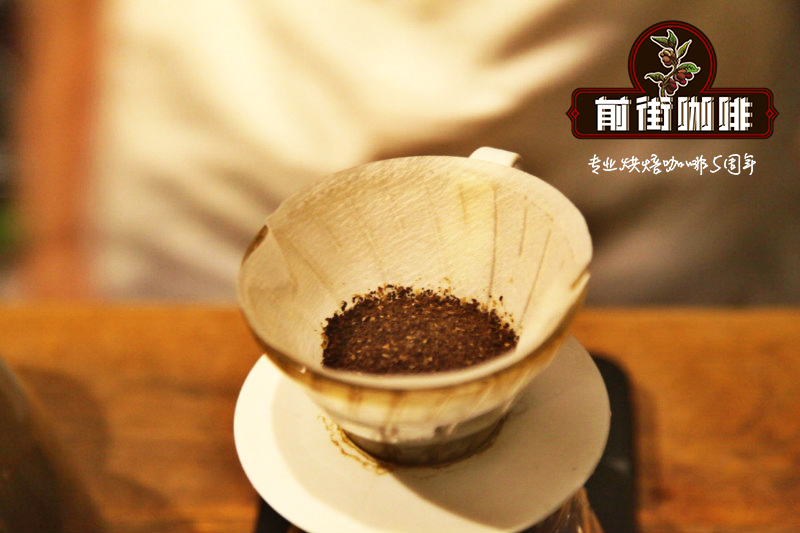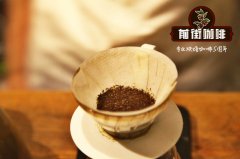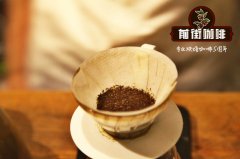The difference between Typica and bourbon Bourbon in the tasting report of Iron pickup Coffee beans

Professional coffee knowledge exchange more coffee bean information please follow the coffee workshop (Wechat official account cafe_style)
We all know that the variety of coffee is important, but many people don't know why it is important.
Take a chestnut, just as we eat crabs, there is a big difference between hairy crabs and river crabs, so this is the difference between species. Maybe this chestnut is inappropriate, but it seems to me to be the closest metaphor.
In the past understanding of coffee, most people know that there are three large varieties of coffee beans.
"Arabica", "Robusta", "Tibilica"
However, with the passage of time and the survival of the fittest in the market, the third kind of "Tibilica" has gradually disappeared in the long river of history, and now the first two are dominant, so let's talk about Arabica-Robsta, which is still active in the market.
Origin:
Arabica: the word is the name of the Yemen Mountains in the Arabian Peninsula, which is now the highlands of southwestern Ethiopia and southeastern Sudan. The earliest coffee was called "coffee shrub of Arabia", "mountain coffee" and "Arabica".
However, due to the roundness of the first two or other reasons, the bean name of coffee has been replaced by "Arabica Arabica", and some areas are still called "Arabian shrubs". "the information comes from the perfect Daily to be authorized."
Arabica is considered to be the first coffee grown in southwestern Arabia for more than 1000 years. Arabica caffeine contains less caffeine and is more acceptable than other commercially cultivated coffees. of course, the growing environment and survival rate are more difficult than other commercially cultivated coffee. Arabica is also far ahead in sales, dominating the variety of coffee, accounting for about 60% of the world's total production.
Robusta: with regard to the history and origin of Robusta, I have recently found many differences in the materials.
1. Ukers described Robusta in "All About coffee" as follows: in 1898, Emil Laurent discovered a coffee grown in the Congo. It is a coffee grown for the market by a horticultural company in Brussels, which gives the coffee the name Robbas seed, although it has been given the name of the discoverer, known as Coffea laurentii.
A 1954 book, Brown Gold, describes that the third kind of coffee is grown in Java and Africa, often referred to as "Robusta", while it was first discovered in the Congo and has been grown since the 20th century.
3C.canephora Frederick Wellman has a few different opinions in his 1961 article and provides more details: in some places, the specific name C.canephora is confused with C. Quilloujie, C. ugandaeje, C. robusta, etc., and he believes that it is the name of the earliest Robusta.
There are more and more explanations and studies on Robusta, but in the end, C.canephora is considered to be the earliest name of Robusta, and there is no unified explanation for the place where it was found. According to the data of Wiki, it is believed that it is in West Africa, and the origin is in Ethiopia, but the commercial cultivation is obviously based on Ukers.
Based on the above information, we can list some information about Robusta.
Found in West and Central Africa, and later spread to West Africa to start commercial cultivation, the earliest name is not robusta but C.canephora.
Due to the planting conditions of Robusta and various reasons, most Robusta are only used for instant and blending, and the blending of commercial beans in most coffee shops are more or less covered by Robusta. I wonder if you will remember that a few years ago, KFC put out an advertisement called "100% Arabica beans". This is the original intention, and it is also a question of the proportion of "fast food restaurants" that are one of the few "fast food restaurants" that use pure Arabica.
And another part of the coffee shop, under the influence of "the era of boutique coffee", often put detailed beans in the beans column, such as "iron pickup", "bourbon family" and other varieties, then many people do not understand what this is; now let's talk about beans.
Before talking about bean seeds, we should pay attention to two points: "genetic variants" and "native species".
Let's talk about genetic variants first.
Genetic variants refer to varieties produced by mating between different trees, or from mutations of original species, which are called "genetic variants" here, and there are many representatives of "genetic variants", such as "iron pickup" and "yellow bourbon".
The native species generally refer to the "Arabica" found in Ethiopia as the original species.
Next, let's talk about several common beans on the market and their advantages and disadvantages.
"Iron pickup Coffee beans Typica"
This variety of iron pickup is produced by genetic mutation, this variety was first found in Ethiopia, the sweetness is very high, but the flavor is more mixed (possibly) compared with other varieties, the yield of iron pickup is less.
"bourbon Bourbon"
There are three kinds of bourbon, which are yellow, red and orange respectively.
The name bourbon, which comes from the island of Bourbon, where it is grown (now known as Reunion), is a variety of early Arabica coffee, belongs to the brother of the iron pickup, and produces slightly more than the iron pickup, but not much.
Bourbon has become a new darling because of its early harvest and resistance to leaf rust, and is one of the veterans of Brazil's role in becoming a coffee supercountry.
The flavor represents "sour" and "sweet" without exception, while the acidity and sweetness depend on the area planted, such as bourbon in El Salvador favours toffee and bright acid, while bourbon in Rwanda tends to sour and sweet fruit.
Family heirloom Heirloom
This is the most common "high-quality" representative in Ethiopia, although it is similar to the "iron pickup", but whether it belongs to the "iron pickup" has so far been inconclusive.
It is said that there are more than a thousand different varieties of family heirlooms, but not all of them have been developed.
And it represents the "floral, citrus, tea, berries" and other very Ethiopian style.
"Kaddura Caturra"
Kaddura was first discovered in Brazil, it belongs to the "son" of bourbon, and Kaddura is also divided into "yellow" and "red" colors. The difference between the two is reflected in coffee cherries. When yellow Kaddura is ripe, the fruit is not traditional red, but yellow, so it is named "Huang Cadura".
The sweetness of Red Kaddura is better than that of Yellow Cadura, while Red Kaddura is more about "berries, grapes, chocolates, etc."
On the other hand, Huang Kadura embodies more of the flavor of "tropical fruit" and its acidity is better than that of Red Kaddura.
"Pakamara."
This bean is famous for its size, first appeared in El Salvador, this is a genetic variant, the mother is Pacas, the father is Maragogype "elephant beans", while the "son" Pacamara inherited his father's body size, mother's flavor and acidity.
Pakamara is recognized by the world for its excellent floral fragrance and balance, including its own competition in the BOP, which just ended last year.
In addition, there are beans such as "Kaduai, Katimo, New World, Java, Sidamo, missionaries" and so on. However, these beans are so famous that we will not repeat them. We will supplement the others in the next issue.
Important Notice :
前街咖啡 FrontStreet Coffee has moved to new addredd:
FrontStreet Coffee Address: 315,Donghua East Road,GuangZhou
Tel:020 38364473
- Prev

The difference between Typica and bourbon Bourbon in the tasting report of Iron pickup Coffee beans
Professional coffee knowledge exchange more coffee bean information please follow the coffee workshop (Wechat official account cafe_style) We all know the type of coffee is very important, but many people do not know why it is important. Take a chestnut, just as we eat crabs, there is a big difference between hairy crabs and river crabs, so this is the difference between species. Maybe this chestnut is inappropriate, but in my opinion
- Next

Flavor characteristics of Iron pickup Coffee beans introduction to the story of legendary tree species classic 1952 iron pickup coffee beans
Professional coffee knowledge exchange more coffee bean information please follow the coffee workshop (Wechat official account cafe_style) Arabica coffee beans are currently the three largest coffee varieties on the market, many of the most commercially valuable boutique coffee beans are Arabica varieties after repeated breeding and variety improvement extended many varieties in order to improve disease resistance, yield, environmental adaptation
Related
- Detailed explanation of Jadeite planting Land in Panamanian Jadeite Manor introduction to the grading system of Jadeite competitive bidding, Red bid, Green bid and Rose Summer
- Story of Coffee planting in Brenka region of Costa Rica Stonehenge Manor anaerobic heavy honey treatment of flavor mouth
- What's on the barrel of Blue Mountain Coffee beans?
- Can American coffee also pull flowers? How to use hot American style to pull out a good-looking pattern?
- Can you make a cold extract with coffee beans? What is the right proportion for cold-extracted coffee formula?
- Indonesian PWN Gold Mandrine Coffee Origin Features Flavor How to Chong? Mandolin coffee is American.
- A brief introduction to the flavor characteristics of Brazilian yellow bourbon coffee beans
- What is the effect of different water quality on the flavor of cold-extracted coffee? What kind of water is best for brewing coffee?
- Why do you think of Rose Summer whenever you mention Panamanian coffee?
- Introduction to the characteristics of authentic blue mountain coffee bean producing areas? What is the CIB Coffee Authority in Jamaica?

